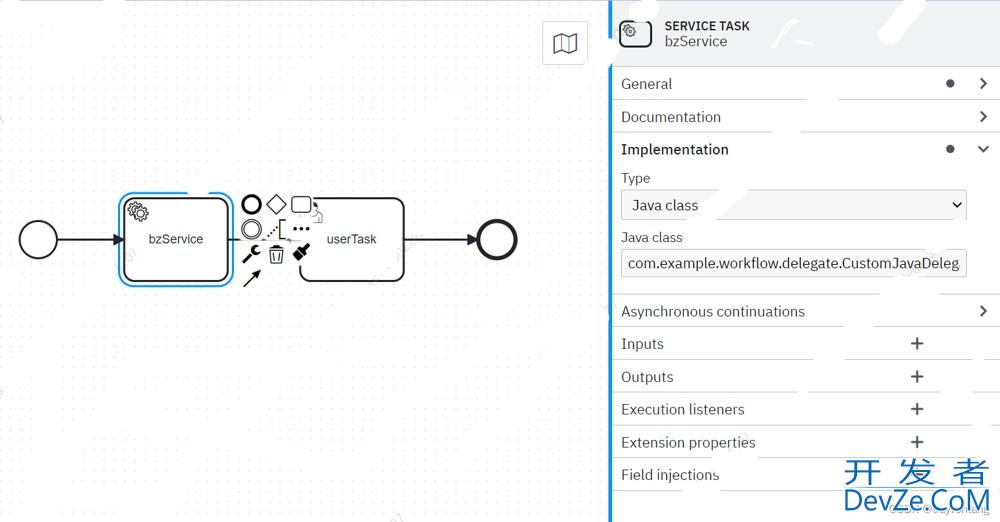Golang函数式编程深入分析实例
目录
- 定义集合功能函数
- 实现具体功能函数
- 测试集合功能
- 泛型实现
定义集合功能函数
首先定义用于测试的结构体WorkWith:
// WorkWith is the struct we'll
// be implementing collections for
type WorkWith struct {
Data string
Version int
}
针对该结构体定义filter和m开发者_JS教程ap函数:
// 基于判断函数过滤python集合,返回符合条件的集合元素
func Filter(ws []Wwww.devze.comorkWith, f func(w WorkWith) bool) []WorkWith {
// depending on results, smaller size for result
// is len == 0
result := make([]WorkWith, 0)
for _, w := range ws {
if f(w) {
result = append(result, w)
}
}
return result
}
// 基于转换函数转换集合元素,返回集合的元素为转换后的元素
func Map(ws []WorkWith, f func(w WorkWith) WorkWith) []WorkWith {
// the result should always be the same
// length
result := make([]WorkWith, len(ws))
for pos, w := range ws {
newW := f(w)
result[pos] = newW
}
return result
}
实现具体功能函数
import "strings"
// LowerCaseData does a ToLower to the
// Data string of a WorkWith
func LowerCaseData(w WorkWith) WorkWith {
w.Data = strings.ToLower(w.Data)
return w
}
// IncrementVersion increments a WorkWiths
// Version
func IncrementVersion(w WorkWith) WorkWith {
w.Version++
return w
}
// OldVersion returns a closures
// that validates the version is greater than
// the specified amount
func OldVersion(v int) func(w WorkWith) bool {
return func(w WorkWith) bool {
return w.Version >= v
}
}
上面定义了三个函数,LowerCaseData修改WorkWith中Data值为小写形式,IncrementVersion让WorkWith中版本增加1,OldVersion基于参数过滤版本。
测试集合功能
定义测试用例文件:
import (
"fmt"
"testing"
)
func TestMap(t *testing.T) {
ws := []WorkWith{
{"Example", 1},
{"Example 2", 2},
}
fmt.Printf("Initial list: %#v\n", ws)
// first lower case the list
ws = Map(ws, LowerCaseData)
fmt.Printf("After LowerCaseData Map: %#v\n", ws)
// next increment all versions
ws = Map(ws, IncrementVersion)
fmt.Printf("After IncrementVersion Map: %#v\n", ws)
// lastly remove all versions older than 3
ws = Filter(ws, OldVersion(3))
fmt.Printf("After OldVersion Filter: %#v\n", ws)
}
运行 go test . -v
输出结果如下:
Initial list: []collections.WorkWith{collections.WorkWith{Data:"Example", Version:1}, collectijavascriptons.WorkWith{Data:"Example 2", Version:2}}
After LowerCaseData Map: []collections.WorkWith{collections.WorkWith{Data:"example", Version:1}, collections.WorkWith{Data:"example 2", Version:2}}
After IncrementVersion Map: []collections.WorkWith{collections.WorkWith{Data:"example", Version:2}, collections.WorkWith{Data:"example 2", Version:3}}
After OldVersion Filter: []collections.WorkWith{collections.WorkWith{Data:"example 2", Version:3}}
上面示例中,我们注意到函数都没有返回任何error对象,这遵循函数式编程思想,尽可能让函数纯粹:不修改原集合元素,即对原集合无副作用,而是生成新的集合。如果需要对集合应用多个功能,那么这种模式能够省去很多麻烦,并且测试也很简单。我们还可以将映射和过滤器链接在一起,让代码更简洁可读。
ws := []WorkWith{
{"Example", 1},
{"Example 2", 2},
}
fmt.Printjsf("Initial list: %#v\n", ws)
result := Filter(Map(Map(ws, LowerCaseData), IncrementVersion), OldVersion(3))
fmt.Printf("After OldVersion Filter: %#v\n", result)
如果功能函数定义为集合类型的方法,并返回集合类型,则上述代码会更优雅。
泛型实现
上面代码仅能在特定类型上使用,我们自然想实现泛型函数,下面通过一个简单示例进行说明:
func map2[T, U any](data []T, f func(T) U) []U {
res := make([]U, 0, len(data))
for _, e := range data {
res = append(res, f(e))
}
return res
}
该函数接收类型T,转换后返回类型U,当然两者类型也可以一样。下面测试函数功能:
// 字符串转大写
words := []string{"war", "cup", "water", "tree", "storm"}
result := map2(words, func(s string) string {
return strings.ToUpper(s)
})
fmt.Println(result)
// 生成原集合元素的平方集合
fmt.Printl编程客栈n("-------------------")
numbers := []int{1, 2, 3, 4, 5, 6, 7, 8, 9, 10}
squares := map2(numbers, func(n int) int {
return n * n
})
fmt.Println(squares)
// 数值转为字符串
fmt.Println("-------------------")
as_strings := map2(numbers, func(n int) string {
return strconv.Itoa(n)
})
fmt.Printf("%q", as_strings)
到此这篇关于golang函数式编程深入分析实例的文章就介绍到这了,更多相关Go函数式编程内容请搜索我们以前的文章或继续浏览下面的相关文章希望大家以后多多支持我们!








 加载中,请稍侯......
加载中,请稍侯......
精彩评论